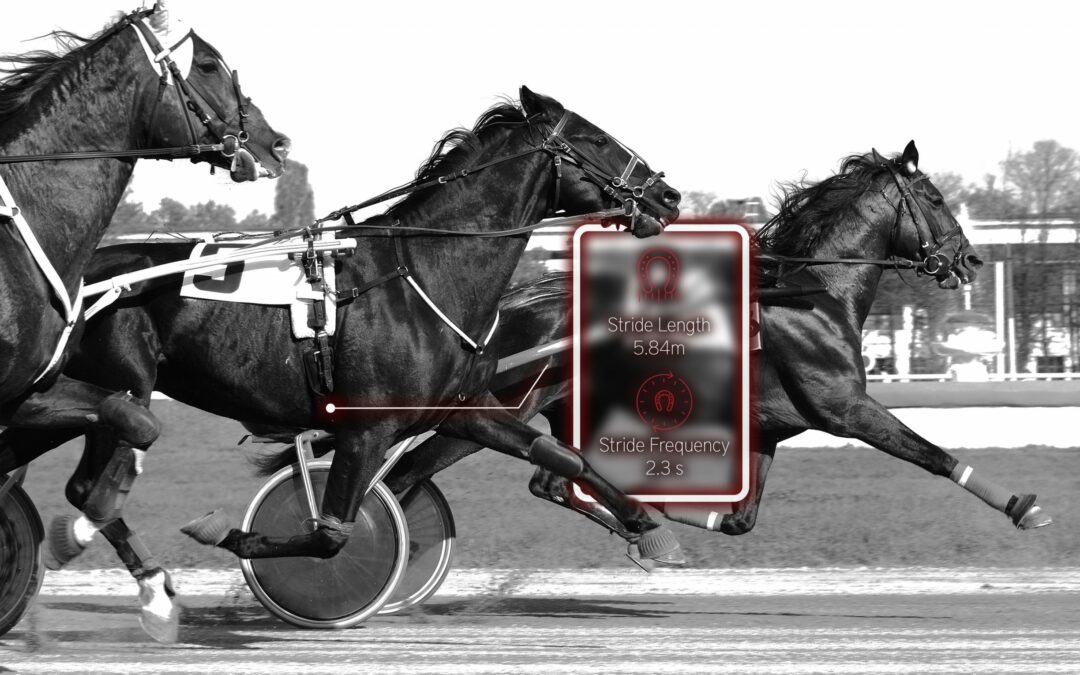The trot and gallop are two jumping gaits: for a brief moment none of the horse’s limbs are in contact with the ground. This suspended time can be used to rise in height, e.g. dressage horses will try to increase this bounce. Racehorses have to use all their energy to propel themselves forward, any vertical movement can be seen as a loss of energy. They should try to keep their core at the same altitude throughout the stride. Trotters and gallopers share this logic. However, their locomotion is very different. In this blog, we are going to study the specific locomotion characteristics of the racehorse.
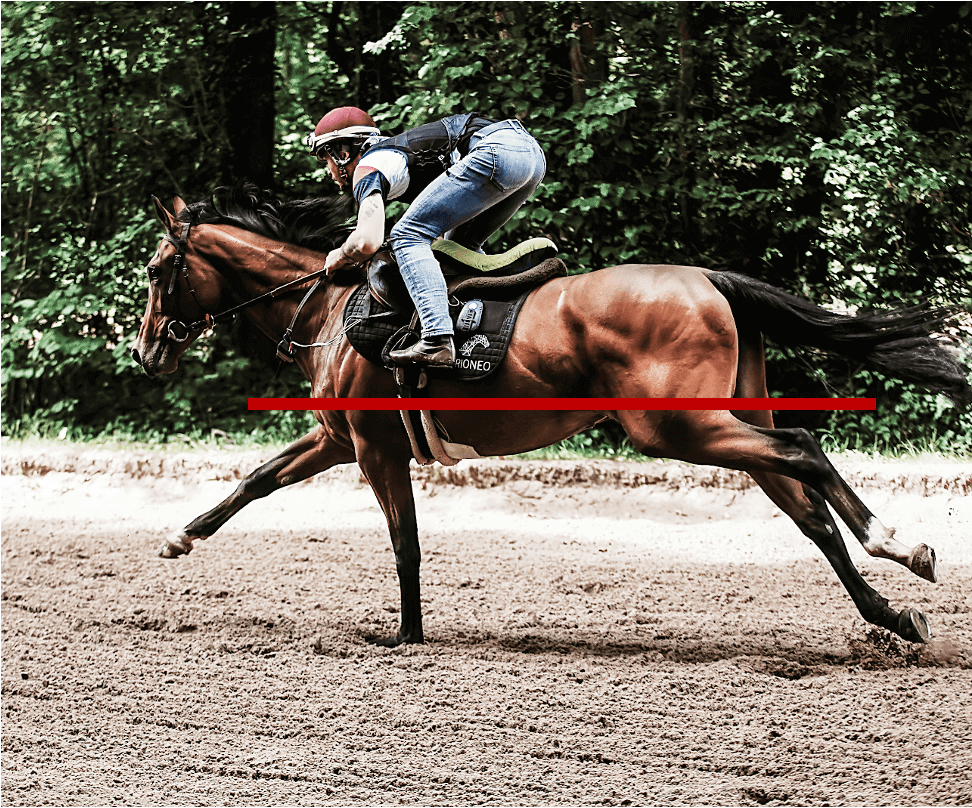
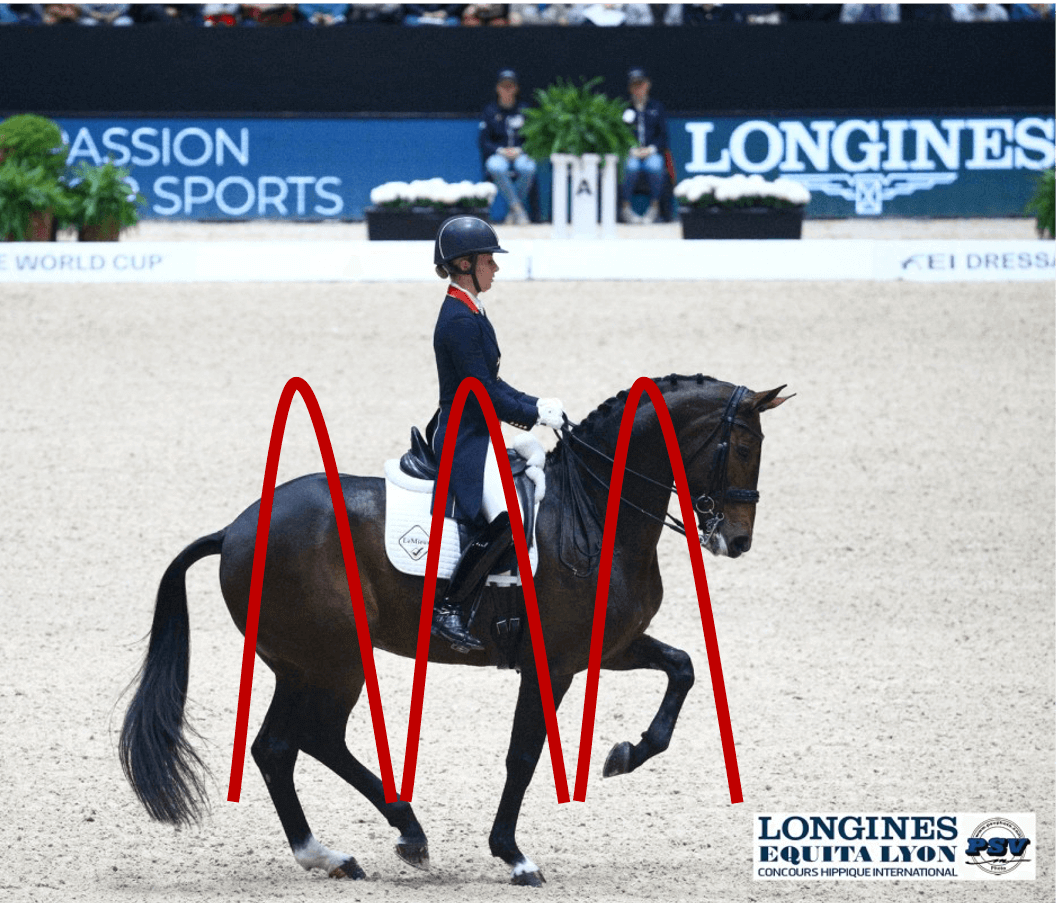
1. Specific locomotion characteristics of the trot
The trot is a symmetrical gait in which both diagonals perform exactly the same movement in terms of distance covered and time to complete the movement. The average of the trotters monitored by EQUIMETRE (for work up to 40km/h) shows a stride frequency of 2.3 strides per second with a stride length of 5.94m; compared to 3m for a riding trot and a stride frequency of 1.3 strides per second. The stride length of a trotter is limited by physiological constraints. Indeed, during suspension time, the hind leg moving forward risks to touch the front leg moving backwards. The hind legs have to move forward from the outside in order to limit the interaction: as the two legs move on different lines, they are less likely to touch each other. This lateral movement is a loss of energy because the whole movement is not concentrated towards an antero-posterior movement. This movement can lead to premature injury or premature deterioration of the limbs, which can lead to arthrosis and cartilage problems.
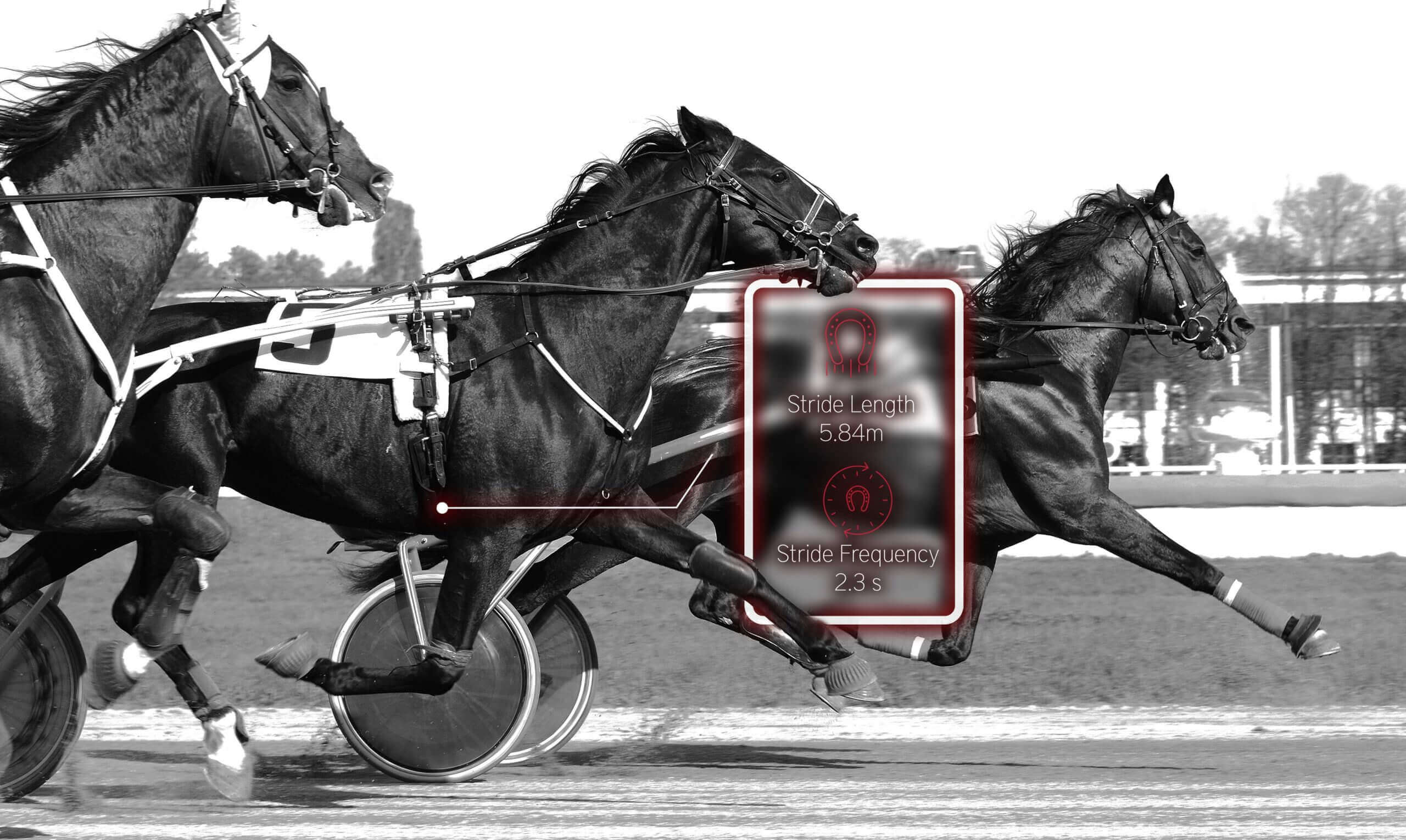
Sometimes, trotters may adopt unnatural gaits or gallop which is then sanctioned. They may gallop forelegs and trot hind legs or simultaneously move in the same direction a foreleg and a hind leg on the same side. Mechanisms leading the trotter to the fault are not well documented in scientific research, but some situations such as fatigue or pain, may trigger them. For example, if the horse touches himself while trying to lengthen the stride. Similarly, too much excitement from the horse seeing his competitors moving away would be likely to cause the horses to commit a fault.
2. Specific locomotion characteristics of the gallop
The gallop is an asymmetrical gait: the horse can gallop either to the right or to the left. In this case, the order in which his limbs are placed will be different. The average of the gallopers monitored by EQUIMETRE (for work reaching 55km/h) shows a stride frequency of 2.43 strides per second with a stride length of 6.85m. In comparison, the stride length of a saddle horse in a riding arena is on average 3.50m. During a hunting gallop, in a classic canter, the two limbs of the outer diagonal land simultaneously. The combination of a hind leg and its opposite front leg is called a diagonal. The gallop is therefore a three-beat gait. However, during a race, because of the speed, they dissociate, i.e. the hind leg lands slightly earlier than the associated front leg and no longer exactly together. The gallop passes from three to four beats.
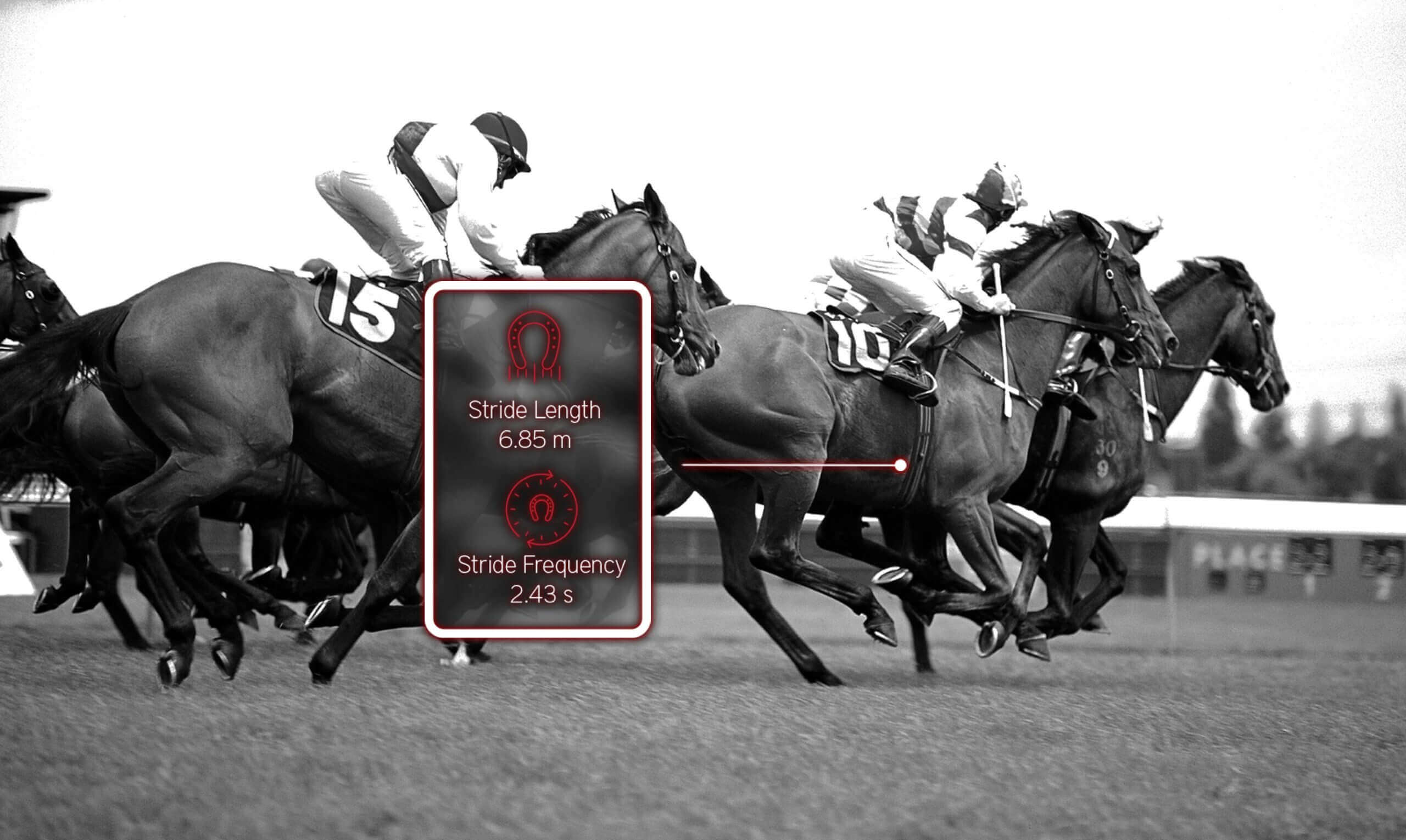
The gallopers rarely adopt faulty gaits. It can happen when leaving the boxes: the gallop of the horse is not natural at that moment. For example, he may gallop to the left of the forelegs and to the right of the hindlegs (disunited gallop). After a few meters the stride returns to normal. It has been suggested (HIRAGA, YAMANOBE and KUBO, 1994) that this is due to the fast start which does not allow the horse to regulate his pace or because it would allow a better forward propulsion. These gait faults can also appear during fatigue.
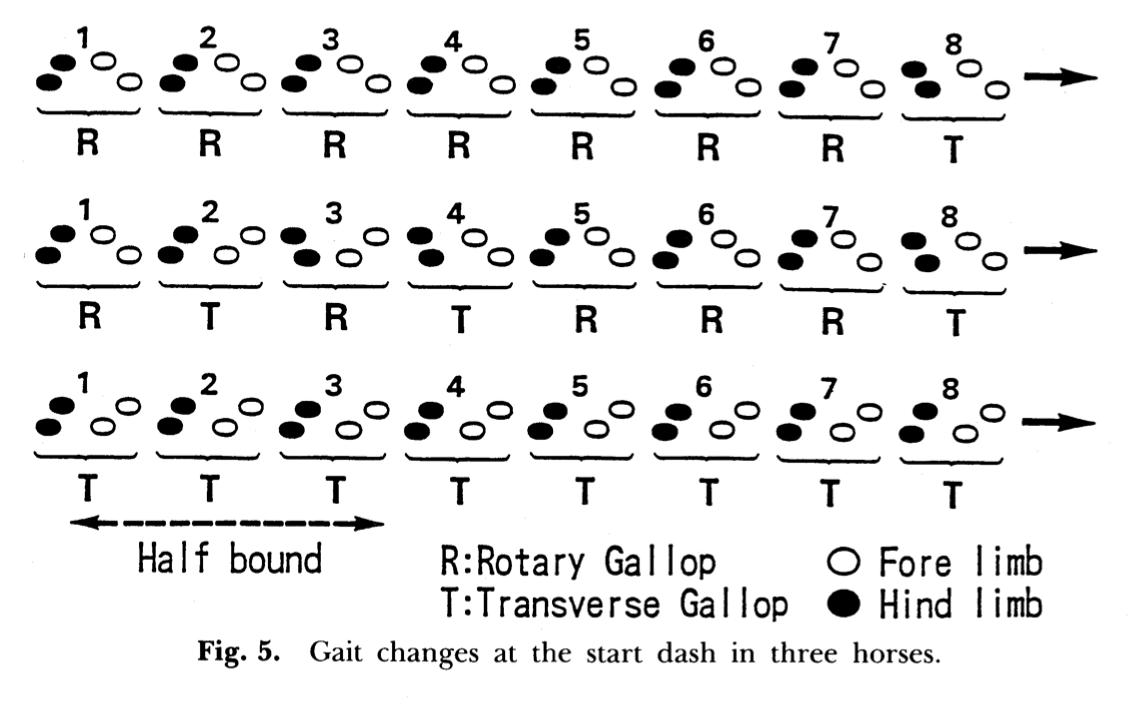
This figure from Hiraga and Al. (1994) presents the locomotion out of a box of 3 different horses. The first horse takes his first 7 strides at a loose canter, before returning to a classic right-hand canter. The second alternates between fair and disunited strides before stabilising on the right. The third horse is in a classic left canter from the start.
From an energetic point of view, it seems that each horse has a preferred speed for the transition from trot to canter (Barrey, Auvinet and Couroucé, 1995). This particular speed is related to an optimal metabolic cost of the race. However, another experiment has shown that the trot to gallop transition is triggered when the peak reaction force with the ground reaches a critical level of approximately 1 to 1.25 the horse’s weight (Barrey, Auvinet and Couroucé, 1995).
3. The horse’s breathing, depending on the gait
Depending on whether the horse is trotting or galloping, his breathing rhythm is not the same. From then on, the breathing strategies are adapted according to the pace and speed.
Breathing at trot is a voluntary respiration and it is not based on the alternation of posture and projection: the respiratory cycle is independent of the movement. Like humans during the race, horses are able to inhale over several strides and exhale over several strides. This allows to adapt their breathing rhythm to their needs and speed. They have the possibility to save themselves during the flexible phases by decreasing their breathing rhythm and then strongly increase their oxygen supply during the intense phases by increasing their breathing rhythm. The effort required for inhalation and exhalation is increased: they have to contract their muscles in order to make the air enter and expel it.
During canter, the breathing is based on the movement of the limbs: the horse breathes in during his suspension time and breathes out when its limbs are laid down. This synchronisation varies very little with speed or fatigue: it is done mechanically. Thus, the galloper cannot adapt his breathing to the intensity of his effort because his breathing rhythm is based on the rhythm of his stride. He can only play on the volume of air he will let enter his lungs. To breathe in air more frequently, he has no choice but to increase his pace in order to increase his breathing rhythm. The efforts made to breathe will be reduced.

Mechanically, when a horse needs to increase his heart rate, he is forced to increase his pace. The fitter a horse is, the more it will be able to push back its aerobic/anaerobic threshold, i.e. the moment when the energy requirements to assume the effort exceed the oxygen supply capacity of the respiratory system.
Thanks to training, horses are able to maintain their effort over their aerobic cycle for longer. The cardio-respiratory management of the effort is optimized. The horse can maintain his stride length without having to accelerate his pace in order to increase his respiratory frequency. This specificity of breathing at gallop allows the implementation of strategies to catch one’s breath during the race. For example, when the horse changes feet, his projection time and breathing time are longer. By changing foot, he can then catch his breath thanks to the extended suspension time, to accelerate again later on.
4. The predilection foot at full gallop
The horse must choose to gallop either to the right or to the left as the gallop is an asymmetrical gait. Horses spontaneously adopt their “favourite” foot when there is no external constraint. All horses are therefore right or left handed depending on which side they prefer to gallop. When galloping to the right, the muscles of the right hand are more stressed than those of the left side. As a result, right-handed horses will be more muscular on the right and vice versa. Each horse is therefore asymmetrical due to his laterality. The trainer must therefore take this preference into account in order to adapt training and commitment to each horse.
Despite a great deal of research, none has shown a difference in performance between right- and left-handed horses in general. However, right-handed horses are more often winners than left-handed horses in the right and vice versa (Cully et al., 2018). For example, in the United States where all tracks are roped left, the majority of horses are left-handed. It appears that the lateralization of a horse only has a small influence during a race, related to the direction of the rope, but does not bring any physiological advantage.
Key words: trot, gallop, racehorse gait, locomotor profile, horse loomotion, symetric gait, amplitude and cadence, asymmetrical gait, racehorse speed, respiration and gait
Bibliography
Barrey, E., Auvinet, B. and Couroucé, A., 1995. Gait evaluation of race trotters using an accelerometric device. Equine Veterinary Journal, 18, pp.156-160. Cully, P., Nielsen, B., Lancaster, B., Martin, J., McGreevy, P. 2018. The laterality of the gallop gait in Thoroughbred racehorses. PLoS ONE 13(6): e0198545. https://doi.org/10.1371/journal. pone.0198545 HIRAGA, A., YAMANOBE, A. and KUBO, K., 1994. Relationships between Stride Length, Stride Frequency, Step Length and Velocity at the Start Dash in a Racehorse. Journal of Equine Science, 5(4), pp.127-130.

